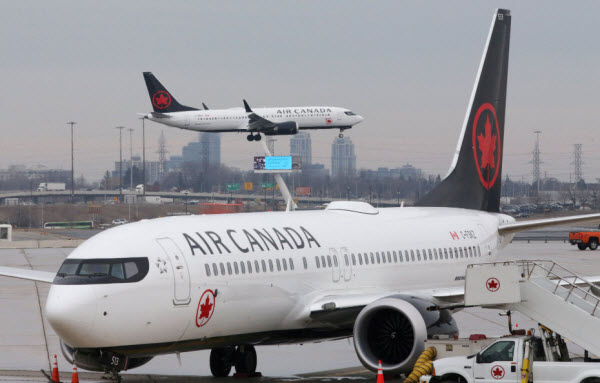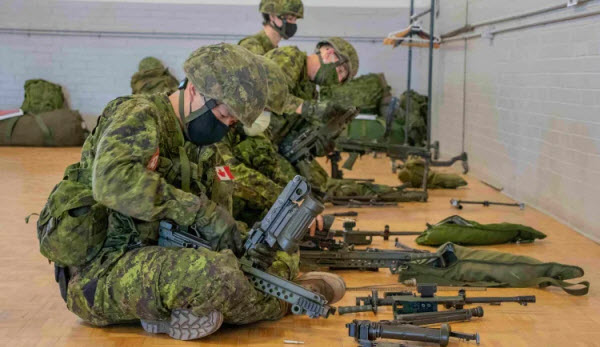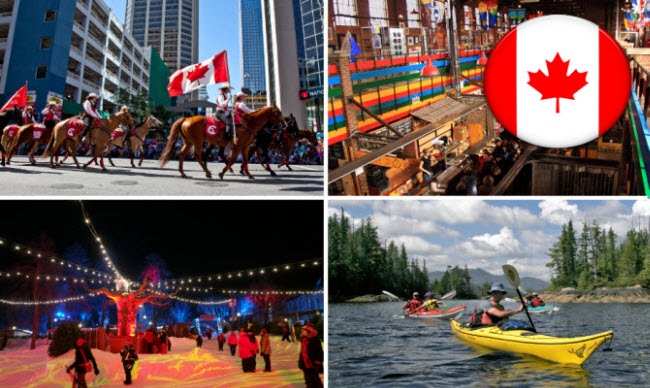Canada, the second-largest country in the world by land area, is known for its vast landscapes, rich natural resources, and multicultural society. Stretching from the Atlantic Ocean in the east to the Pacific Ocean in the west, and from the United States in the south to the Arctic Ocean in the north, Canada is a nation of stunning natural beauty and diverse climates. Its strong economy, democratic government, and commitment to multiculturalism make it a prominent global player.
Geography

Location: North America
Coordinates: Approximately 56.1304° N, 106.3468° W
Area: About 9,984,670 square kilometers
Borders:
- North: Arctic Ocean
- South: United States (8,891 kilometers)
- East: Atlantic Ocean
- West: Pacific Ocean
Climate:
- Varies from temperate in the southern regions to polar in the northern regions, with diverse climates including humid continental in the central part and oceanic along the west coast.
Topography:
- Includes major mountain ranges such as the Rocky Mountains, expansive prairies, and numerous lakes and rivers, including the Great Lakes.
Elevation:
- The highest peak is Mount Logan in the Saint Elias Mountains, with an elevation of 5,959 meters.
Natural Resources:
- Includes oil, natural gas, minerals, timber, and freshwater.
Land Use:
- 38% agriculture
- 38% forests
- 24% built-up areas and other uses
Population Distribution:
- Population density is highest in major urban centers such as Toronto, Vancouver, and Montreal, and along the U.S. border.
Population and Society

Population: Approximately 39 million (2024 estimate).
Ethnic Groups:
- White (Caucasian): 73%
- Asian: 18%
- Indigenous: 5%
- Black: 3%
- Other: Includes Hispanic, Middle Eastern, and other groups.
Languages:
- Official Languages: English and French.
Religions:
- Christianity: 67%
- No Religion: 23%
- Other Religions: Includes Islam, Hinduism, Sikhism, and Buddhism.
Age Structure:
- A diverse age range with a significant percentage of elderly individuals.
Population Growth Rate:
- Approximately 1% annually.
Country

Country Name: Canada
Common Name: Canada
Reason for Name: Derived from the St. Lawrence Iroquoian word “kanata,” meaning “village” or “settlement.”
Type of Government: Federal Parliamentary Democracy and Constitutional Monarchy.
Capital: Ottawa
Reason for Naming Capital: Named after the Ottawa River, with “Ottawa” derived from the Algonquin word “adawe,” meaning “to trade.”
Local Time: Includes six time zones: Pacific, Mountain, Central, Eastern, Atlantic, and Newfoundland.
Daylight Saving Time: Observed in most provinces and territories.
Administrative Divisions: 10 provinces and 3 territories.
Territories: Northwest Territories, Yukon, Nunavut.
Independence: Gained independence from the United Kingdom on July 1, 1867, with the passage of the Constitution Act, 1867 (formerly the British North America Act, 1867).
Citizenship Acquisition: Through birth in Canada, legal residency, or naturalization.
Legal System: Constitutional monarchy with a federal parliamentary system.
Executive Branch: The Prime Minister is the head of government, and the Governor General represents the monarch.
Legislative Branch: The Parliament of Canada, consisting of the House of Commons and the Senate.
Judicial Branch: The Supreme Court of Canada and other federal courts.
Political Parties: Liberal Party, Conservative Party, New Democratic Party (NDP), and others.
Flag Description: Known as the Maple Leaf, featuring a red field with a white square at the center and a red, stylized maple leaf with 11 points in the center.
Country Code: CA
Economy
GDP: Approximately $2.2 trillion USD.
Agricultural and Animal Products:
- Wheat, canola, dairy products, meat.
Industries:
- Includes natural resources, manufacturing, technology, and services.
Budget:
- Balanced federal budget with moderate deficits.
Exports:
- Energy resources, vehicles, machinery, and lumber.
Imports:
- Machinery, electronics, vehicles, and consumer goods.
Foreign Reserves:
- Approximately $100 billion.
External Debt:
- About $1 trillion.
Local Currency:
- Canadian Dollar (CAD).
Communications
Landlines: About 15 million lines.
Mobile Lines: About 40 million lines.
Country Code: +1
Broadcast Media:
- Includes a range of national and regional television and radio channels.
Internet Code:
- .ca
Internet Users:
- Approximately 34 million people.
Transportation

National Air Transport System:
- Extensive network of airports and airlines.
Airports:
- Over 500 airports.
Helipads:
- Numerous, particularly in major cities and remote areas.
Pipelines:
- Significant network for oil and gas transport.
Railroads:
- Extensive rail network of over 31,000 kilometers.
Road Network:
- Includes well-developed highways totaling over 1 million kilometers.
Ports:
- Major ports include Vancouver, Montreal, and Halifax.
Military

Military Composition:
- Includes the Canadian Army, Royal Canadian Navy, and Royal Canadian Air Force.
Military Spending:
- Approximately $30 billion USD annually.
Military and Security Personnel:
- About 100,000 active duty members.
Military Equipment:
- Includes fighter jets, naval vessels, and armored vehicles.
Military Service Age:
- Ranges from 18 to 60 years.
